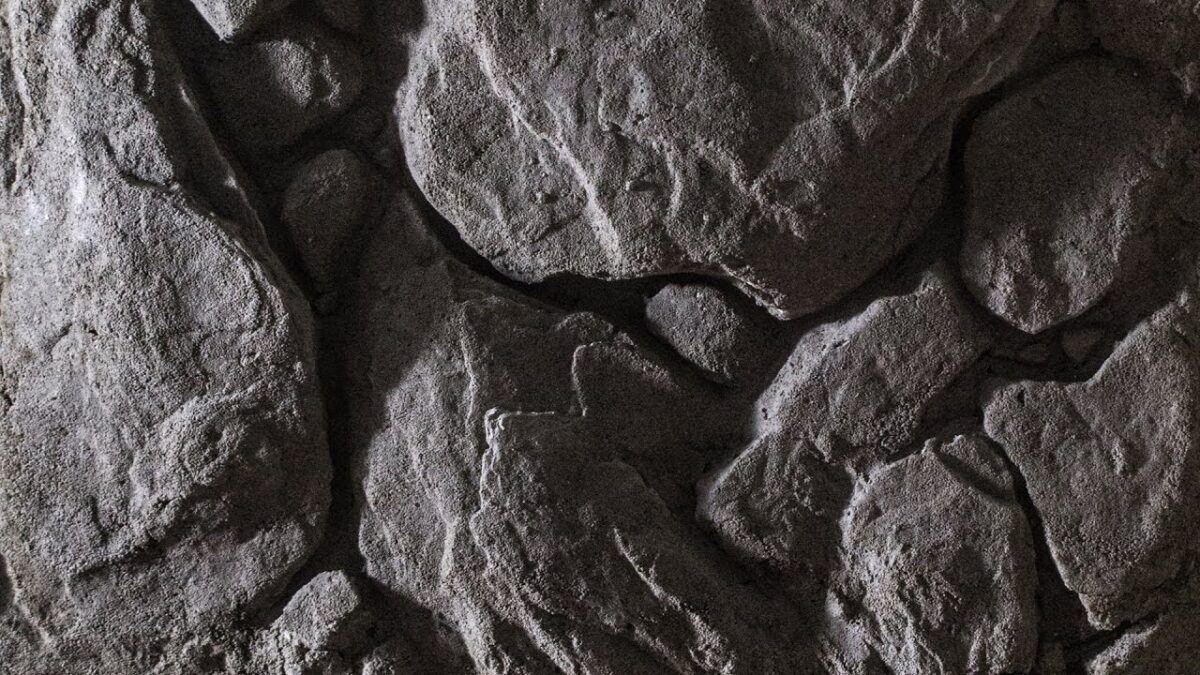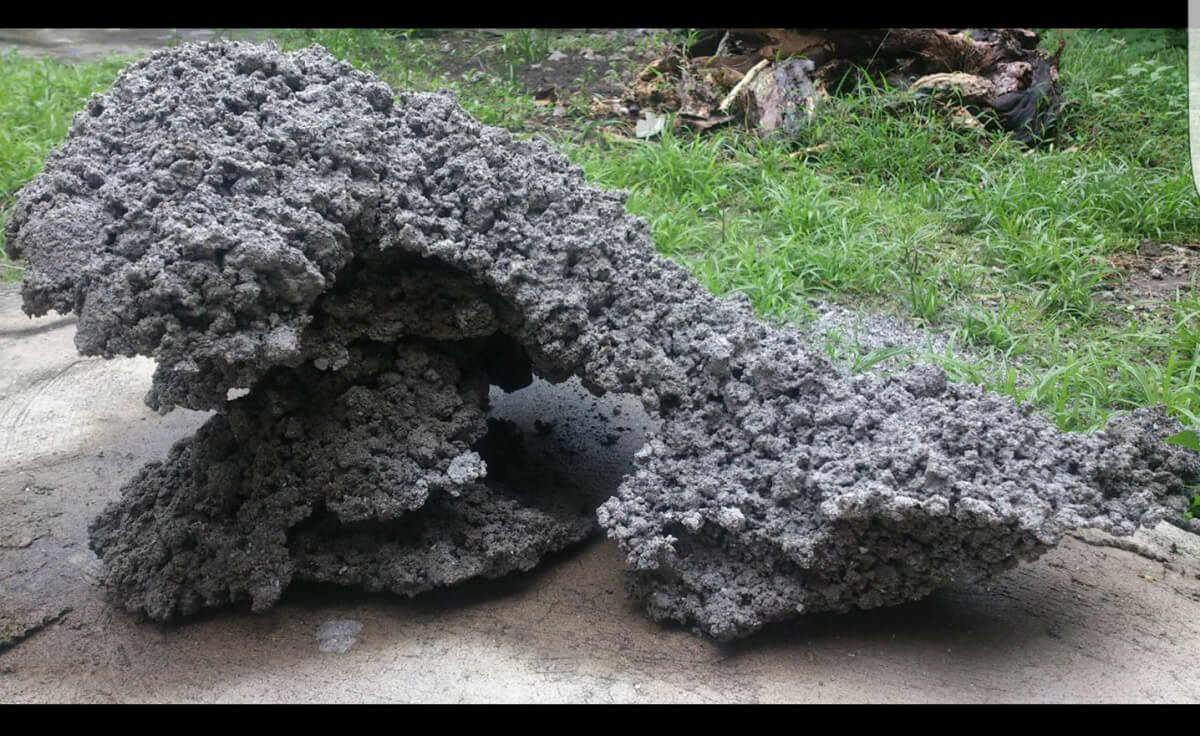Have you ever admired your reef aquarium and wished for a more captivating, personalised aquascape? Imagine transforming your aquatic paradise with unique, handcrafted rocks that echo the beauty of the ocean’s depths. What if you could create a living artwork that thrives, evolves, and tells a story as unique as its creator? Dive into the world of DIY cement rocks for reef aquariums and turn your vision into reality.
In this series of articles on DIY Cement rocks for your aquariums. We’ll take you from dream to coralline algae growing readily on your DIY cemented rocks.
Key Takeaways
Diving into the realm of DIY cement rocks for reef aquariums unveils a world where personalisation and environmental stewardship go hand in hand, offering aquascaping enthusiasts the tools and inspiration to create unique, cost-effective underwater landscapes.
This approach not only enriches the aesthetic appeal of aquariums but also promotes optimal habitats for marine life, emphasising the selection of safe materials and proper curing methods to ensure the health of the aquatic ecosystem.
Equipped with essential knowledge of tools, materials, and safety, along with a strong sense of community and ecological responsibility, hobbyists are empowered to embark on rewarding aquascaping projects that mirror the complexity and beauty of marine environments.
- Empowerment through Personalisation: DIY cement rocks offer aquarium hobbyists the ability to create unique, tailor-made underwater landscapes. This approach enhances the aesthetic appeal and provides optimal habitats for marine life, presenting a cost-effective alternative to traditional aquascaping materials.
- Selection and Safety: Emphasises the importance of selecting safe cement types and applying proper curing techniques. This ensures that DIY creations are not only visually appealing but also conducive to the health and well-being of tank inhabitants.
- Environmental Benefits: Highlights the sustainability of using DIY cement rocks, reducing reliance on wild-caught live rock. This practice conserves natural reef ecosystems and minimises the ecological footprint associated with the aquarium hobby.
- Tools and Preparation: Outlines the essential tools and materials for DIY cement rock projects. It also provides safety tips and design planning strategies, helping hobbyists start aquascaping projects effectively.
- Community and Conservation: Encourages a sense of community among aquarists who view themselves as guardians of the marine environment. The series aims to inspire the creation of underwater masterpieces that reflect the beauty and complexity of the ocean’s depths while fostering ecological awareness and conservation.
The Allure of Custom Cement Rocks in Reef Aquariums
The journey into designing reef aquariums often begins with a vision to create an underwater sanctuary that mesmerises onlookers and provides a thriving ecosystem for its inhabitants. Using custom cement rocks in reef aquariums has become a cornerstone for aquascaping enthusiasts seeking to realise this vision. This innovative approach blends the art of personalisation with practical benefits, offering a unique pathway to design, affordability, and ecological harmony.
Personalisation of Your Aquatic Space
The unparalleled ability to personalise your aquatic space is at the heart of custom cement rocks. Unlike off-the-shelf decorations, crafting your rocks allows for an infinite array of shapes, sizes, and textures, enabling you to mimic natural marine landscapes or invent new ones. This creative freedom lets you stamp your aesthetic on your aquarium and tailor the environment to your aquatic residents’ specific needs and behaviours. Whether it’s sculpting intricate caves for shy fish to hide, crafting ledges for coral attachment, or designing arches for water flow optimisation, the customisation possibilities are as boundless as the ocean itself.
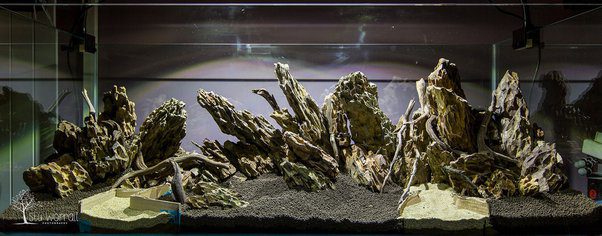
Cost-Effective Aquascaping Solutions
The economic advantage of using cement to create aquarium rocks cannot be overstated. For many hobbyists, the cost of purchasing natural or pre-made rocks can quickly add up, especially when aiming to fill larger tanks or achieve a densely decorated aquascape. Conversely, cement is remarkably affordable and widely available, making it an ideal material for large-scale projects on a budget. Investing in basic materials and dedicating time to crafting allows you to produce a vast quantity of rocks without the premium price tag, reducing the overall cost of setting up and maintaining your reef aquarium.
Creating Ideal Habitats for Marine Life
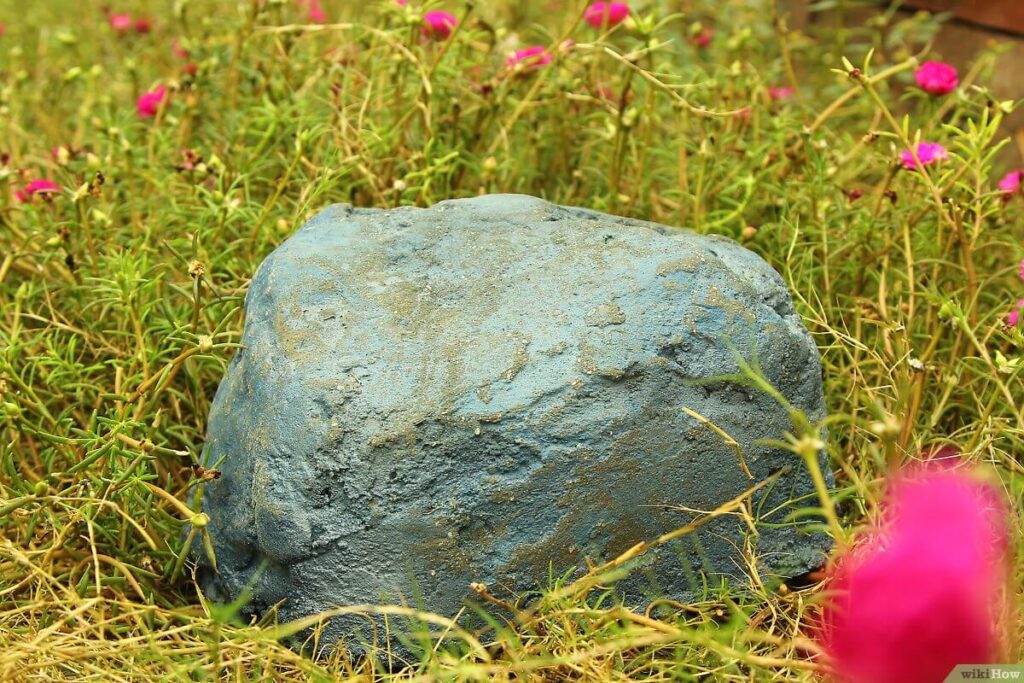
Beyond aesthetics and economics, any reef aquarium’s primary mission is to support its marine inhabitants’ health and well-being. Custom cement rocks play a pivotal role in this endeavour by enabling the creation of habitats that cater to the diverse needs of different species.
Once cured and adequately treated, cement’s porous nature can facilitate the growth of beneficial bacteria, essential for a balanced ecosystem. Moreover, the ability to design structures with specific features means creating varied landscapes that offer ample hiding spots, breeding grounds, and territories, promoting natural behaviours and reducing stress among tank residents.
By thoughtfully designing your cement rocks, you’re not just building decorations; you’re engineering a vibrant, dynamic ecosystem that mirrors the complexity and richness of marine life in the wild.
Understanding the Basics of Cement for Aquarium Use
It is essential to have a firm grasp of the properties of cement in aquatic settings when making your cement rocks for reef aquariums. This understanding guarantees your creations’ safety and stability, benefiting your reef tank’s fragile ecosystem.
Safe Types of Cement for Reef Tanks
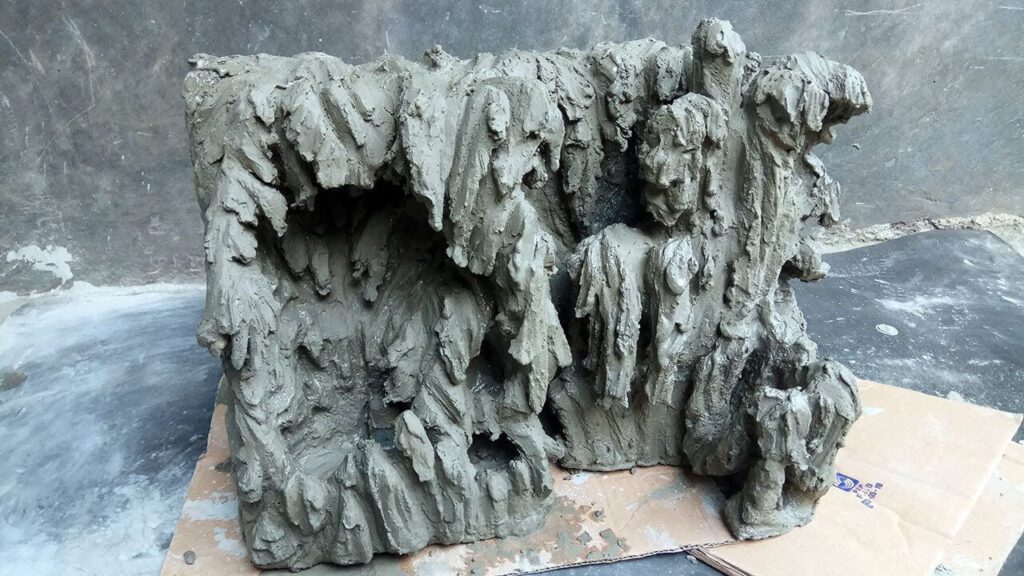
The safety of the aquatic life in your reef tank is paramount, so choosing cement type is a critical decision in creating DIY rocks. Not all cements are built equal, especially when it comes to their application in an environment as sensitive as an aquarium. The most commonly recommended type of cement for aquarium use is Portland cement, specifically Type I or Type II.
These types are preferred due to their lower content of additives compared to other varieties, making them safer for aquatic life once adequately cured and treated. It’s also important to note that the cement should be free from antifreeze compounds, sometimes added to improve workability in cold conditions but can harm marine organisms.
Another consideration is white Portland cement, which doesn’t impart colour to the water or the structures you create due to its lower iron content. This can be particularly beneficial for aquarists aiming to achieve a particular aesthetic without compromising the health of their tank’s inhabitants. Regardless of the type, the cement must be thoroughly cured and leached of excess alkalinity—a process that removes soluble compounds that could otherwise increase the pH of your aquarium water to dangerous levels.
When using cement in aquariums, especially for creating DIY rocks or decorations, it’s crucial to be aware of certain ingredients that could potentially harm the aquatic environment. Here are key ingredients to watch out for:
High Alkalinity
- Lime (Calcium Hydroxide): Cement naturally contains lime, which can significantly increase the pH of water, making the environment unsuitable for most aquatic life. Curing cement properly to reduce its alkalinity before introducing it into an aquarium is essential.
Additives and Impurities
- Antifreeze Compounds: Some cements include antifreeze compounds to improve workability in cold weather. These chemicals can be toxic to aquatic life and should be avoided.
- Heavy Metals: Impurities such as chromium, lead, and nickel might be present in some types of cement. These heavy metals can leach into the water, posing a risk to fish and invertebrates.
- Alumina and Silica: While these are standard cement components, excessive amounts can affect the water chemistry. Choosing cement types with compositions that are safer for aquarium use is essential.
Type of Cement
- Portland Cement: This is the most recommended type for aquarium use, mainly white Portland cement, which has lower impurities. However, even with Portland cement, ensuring it’s free from harmful additives is crucial.
- Masonry Cement: Often contains lime and other additives to improve workability and bonding properties. These additives can be harmful to aquatic environments and should generally be avoided.
pH Modifying Agents
- Some cements are formulated with agents designed to modify the pH for specific industrial applications. These formulations can be highly detrimental in aquariums, where pH stability is critical.
Organic Compounds
- Organic Dyes and Colorants: Used to colour cement, these compounds may not be stable in an aquatic environment and could leach harmful substances over time.
- Plasticisers: Added to improve the flexibility and workability of cement, plasticisers can be harmful to aquatic life if they leach out into the water.
Safe Practices for Using Cement in Aquariums:
- Curing: Allow the cement to cure fully in a moist environment, followed by an extensive leaching process in water to remove excess lime and alkalinity.
- Testing: Before introducing any cement structure into an aquarium, soak it in water and regularly test the pH to ensure it stabilises and matches the desired levels for your aquarium.
- Research: Always research and opt for cement products with lower harmful additives recommended explicitly for use in aquatic environments.
The Role of Cement in Aquatic Stability
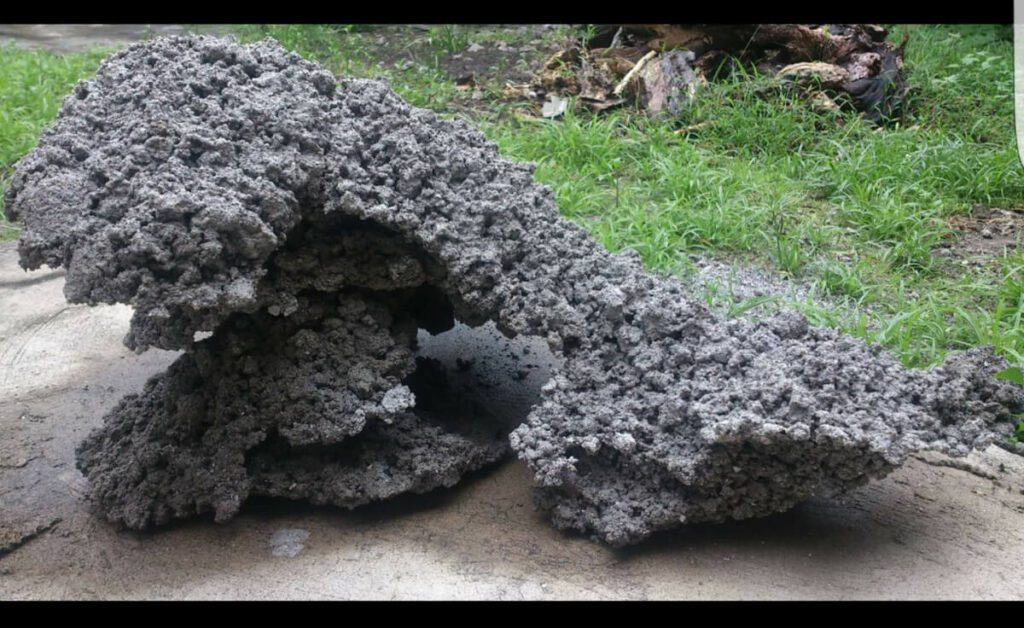
Cement plays a dual role in reef aquariums, serving both as a structural component and a contributor to the chemical stability of the aquatic environment. Structurally, cement allows for creating rocks and caves of various shapes and sizes, providing essential hiding spots and territories for the tank’s inhabitants. These structures can be tailored to mimic natural reef formations, offering an authentic environment for fish and invertebrates to thrive.
Chemically, the stability of your aquarium’s environment hinges on carefully preparing and curing the cement used in your structures. Properly cured cement rocks contribute to a stable pH level, which is essential for the health and well-being of coral and marine life.
The curing process, which involves soaking the cement structures in water and regularly changing them, helps to leach out lime and other alkaline substances. This step is crucial to ensure that introducing your DIY rocks does not lead to sudden spikes in pH levels, which can harm the delicate balance of reef aquarium ecosystems.
The Environmental Benefits of DIY Cement Rocks
Integrating DIY cement rocks into reef aquariums extends beyond aesthetics and cost efficiency; it embodies a profound commitment to environmental sustainability. By creating their stones, aquarists elevate the visual dynamism of their underwater realms and align their hobby with practices that safeguard our planet’s natural resources. This chapter delves into how DIY cement rocks serve as a cornerstone for sustainable aquascaping, significantly mitigating the adverse impacts of traditional reef aquarium setups.
Sustainability in Aquascaping
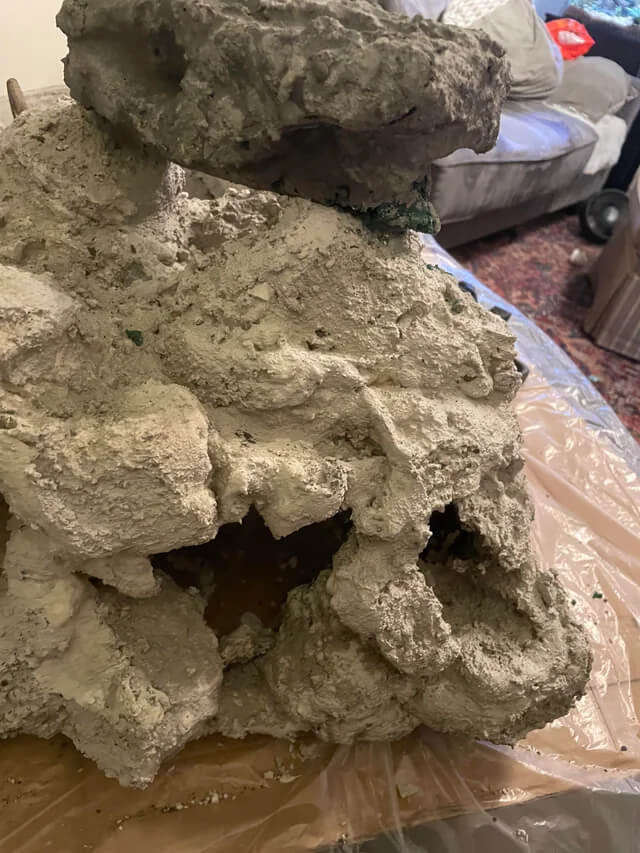
Aquascaping, the art of aesthetically pleasingly arranging aquatic plants, rocks, and substrates, has traditionally relied on natural materials harvested from the environment. The shift towards using DIY cement rocks is a testament to the aquascaping community’s growing awareness and commitment to sustainability.
This approach reduces the ecological footprint of maintaining an aquarium by minimising the need for materials that, when harvested in large quantities, can lead to habitat destruction and a decline in biodiversity in natural water bodies.
DIY cement rocks replicate natural reefs’ complex structures and textures and offer a durable, customisable solution that does not deplete natural resources. By embracing this method, aquarists contribute to aquascaping that respects the balance of marine ecosystems, ensuring their hobby does not come at the expense of the environment’s health.
Reducing the Demand for Wild-Caught Live Rock
Live rock, a fundamental component in many reef aquariums, is prized for its natural bacteria and microorganisms that play a crucial role in the nitrogen cycle, helping to maintain water quality. However, the demand for live rock harvested from ocean reefs contributes to the degradation of these critical habitats, disturbing marine life and decreasing biodiversity.
DIY cement rocks emerge as an innovative solution to this problem, significantly reducing the demand for wild-caught live rock. By creating rocks that mimic natural live rock’s functional and aesthetic qualities, aquarists can achieve the desired biological filtration and structural beauty without contributing to the harmful extraction practices that threaten marine ecosystems.
This shift not only preserves natural reef structures but also encourages a more conscious and responsible approach to marine hobbyism, where the well-being of the global marine environment is held in high regard.
Tools and Materials Needed to Get Started
Embarking on creating DIY cement rocks for your reef aquarium requires a thoughtful selection of tools and materials. This foundational step not only sets the stage for the success of your project but also ensures the safety and well-being of your aquatic ecosystem. Let’s delve into the crucial aspects of choosing the proper cement and additives, then identify the essential tools for shaping and curing your creations.
Choosing the Right Cement and Additives
Cement Type: The cornerstone of your DIY rock project is the type of cement used. For aquarium use, choosing a non-toxic, water-resistant cement is paramount. Portland cement is widely recommended due to its purity and lack of harmful additives. It’s crucial to avoid cements with added chemicals or fungicides that could leach into the water and harm your marine life.
Additives: While the basic mixture of cement and water can suffice, incorporating certain additives can enhance the texture, colour, and structural integrity of your rocks. To mimic natural rock textures, consider adding fine sand or crushed coral. These additives contribute to the aesthetic appeal and provide a more favourable surface for colonising beneficial algae and bacteria.
- Pozzolans: Adding a pozzolan, such as silica fume or fly ash, can increase the strength and decrease the permeability of the cement, making it more durable in the aquatic environment.
- Fibres: For larger structures, mixing in tiny fibres (e.g., polypropylene) can help prevent cracking by improving tensile strength.
- Pigments: If you wish to colour your rocks, ensure that you use non-toxic, mineral-based pigments designed for use with cement. These can help achieve a more natural look that blends seamlessly with your aquarium’s aesthetic.
Essential Tools for Shaping and Curing
Mixing Supplies: A sturdy bucket and a mixing tool, such as a paddle mixer attachment for your drill, are essential for a consistent mixture. Remember, homogeneity and texture are key to a good cement mix, significantly affecting the outcome.
Moulds and Shaping Tools: Depending on the complexity of your design, various moulds can be used to shape your rocks. Silicone molds offer flexibility and ease of removal, while custom-made shapes can be crafted from plastic sheets or carved from foam. Essential sculpting tools, gloves, and a trowel will be indispensable for freehand shaping.
Curing Equipment: Proper curing is critical for the safety and durability of your cement rocks. A set of spray bottles for keeping the surface moist during the initial curing stage and a large container for the water-soaking process are vital. Additionally, pH test kits or strips will be necessary to monitor the leaching process, ensuring the rocks do not alter the aquarium’s pH levels unfavourably.
Safety Gear: Working with cement requires precautions to protect your skin and respiratory system. Protective gloves, eyewear, and a dust mask should be part of your toolkit to ensure a safe working environment.
By carefully selecting the appropriate cement and additives and equipping yourself with the necessary tools for shaping and curing, you are well on your way to creating beautiful, custom rocks for your reef aquarium. This process allows for a personalised touch in aquascaping and fosters a deeper connection with your aquatic environment through the hands-on experience of crafting your underwater landscape.
Preparing for Your First Project
Preparation is vital to ensuring that your endeavour results in aesthetically pleasing structures and maintains the health and safety of your aquatic environment. Let’s dive into the crucial steps of planning your design and adhering to safety measures when working with cement.
Planning Your Design
Visualising the Aquascape: Start by imagining the final look of your aquarium. Consider the types of marine life you wish to support and how the structures you create will affect their habitat. Sketching your ideas can be incredibly helpful, allowing you to visualise the placement and size of your rocks.
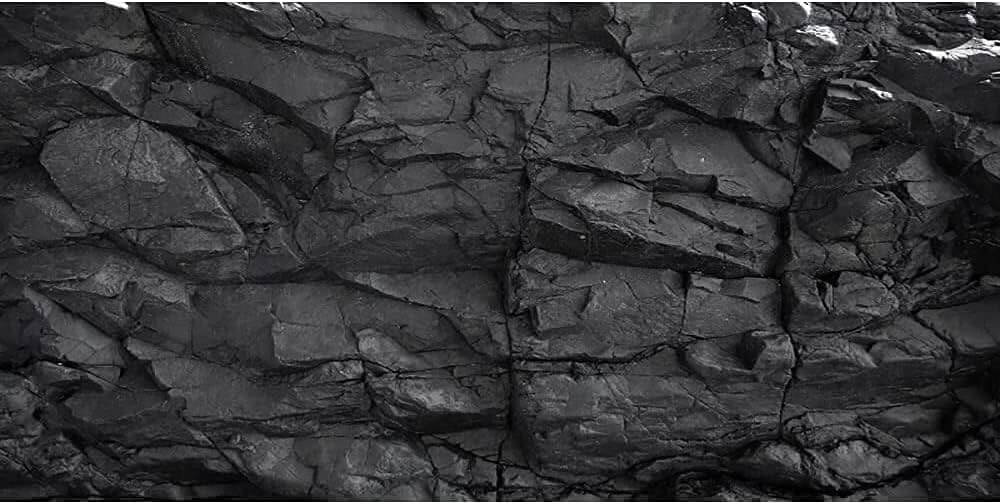
Research and Inspiration: Look for inspiration in natural reef formations, aquarium hobbyist forums, and aquascaping galleries. Pay attention to the shapes, sizes, and arrangements that support a healthy and vibrant ecosystem. This research will help you design structures that are not only beautiful but also functional.
Size and Scale: Remember the size of your aquarium and the scale of your intended designs. Large structures in a small tank can overpower the space and negatively impact the health of its inhabitants by restricting flow and oxygenation. Conversely, structures that are too small or sparse might not provide enough interest or hiding spots for fish and invertebrates.
Material Considerations: Decide on the type of cement suitable for your project. Portland cement is commonly used for such applications, but make sure it doesn’t contain harmful additives. Additionally, consider whether you’ll incorporate other materials into your rocks, such as safe, non-toxic natural aggregates or fibres, for added strength.
Safety Measures for Working with Cement
Personal Protective Equipment (PPE): Cement powder is acidic and can cause skin irritation and burns upon contact. Always wear gloves, long sleeves, and eye protection when handling cement. A dust mask or respirator is also recommended to avoid inhaling cement dust.
Proper Ventilation: Work in a well-ventilated area to ensure cement dust does not accumulate in the air. Outdoor spaces are ideal, but if you must work indoors, ensure windows are open or use a fan to circulate air.
Safe Mixing Practices: Add water to the powder gradually to avoid creating too much dust when mixing cement with water. Use a mixing tool or drill with a mixing paddle at a low speed to minimise airborne particles.
Skin and Eye Protection: In case of skin contact with wet cement, wash the affected area immediately with soap and water to prevent burns or irritation. If cement gets into your eyes, rinse them thoroughly with clean water and seek medical attention if irritation persists.
Clean-up and Disposal: Clean your tools and workspace promptly after finishing your project. Cement should not be washed down the drain as it can harden and cause blockages. Instead, dispose of excess cement and wash water according to local regulations.
By meticulously planning your design and adhering to these safety measures, you set the stage for a successful DIY project that enhances your reef aquarium’s beauty and biodiversity. Preparing thoroughly ensures that your venture into creating DIY cement rocks is enjoyable and safe, leading to a thriving aquatic ecosystem that you and your marine inhabitants will appreciate.
What to Expect in This Series
In the forthcoming series dedicated to the art of creating DIY cement rocks for reef aquariums, we’ll journey through a comprehensive exploration of techniques, considerations, and creative inspirations tailored for both novice and seasoned aquarists. This series is designed to unfold the vast potential of DIY aquascaping, offering a deep dive into the nuances of crafting your own reef structures that are visually captivating, environmentally responsible, and conducive to the thriving of marine life.
A Sneak Peek at Upcoming Topics
- Choosing the Right Materials: Delving into the specifics of selecting the safest and most effective types of cement and additives, ensuring the well-being of your aquatic inhabitants.
- Design and Planning: Guidance on conceptualising and sketching your dream aquascape, including considerations for the spatial needs of different marine species.
- Mixing and Molding Techniques: Step-by-step instructions on preparing and shaping your cement mixture into natural-looking rocks and formations.
- The Curing Process Explained: A detailed walkthrough to ensure your creations are safe for your aquarium, focusing on leaching techniques to neutralise pH.
- Installing Your DIY Rocks: Tips on strategically placing your rocks within the aquarium to achieve aesthetic balance and provide functional benefits for your marine life.
- Advanced Aquascaping Techniques: We’ll cover advanced methods for creating intricate structures and dynamic landscapes for those looking to take their skills further.
- Maintenance and Troubleshooting: Practical advice on maintaining your cement structures and addressing common issues that may arise over time.
Encouragement for Beginners
Embarking on the journey of DIY cement aquascaping can be as rewarding as it is challenging, especially for those new to the hobby. This series is crafted with the beginner in mind, breaking down complex processes into manageable steps and ensuring that even those without prior experience can confidently create their underwater masterpieces. Remember, every expert was once a beginner, and aquascaping is one of endless learning and creativity.
We encourage newcomers to embrace the trial-and-error process, seek advice from the community, and, most importantly, enjoy the unique satisfaction of creating a piece of the ocean’s majesty in your own home. Through this series, we hope to inspire, educate, and empower you to take the first steps towards transforming your aquarium into a thriving, personalised one.
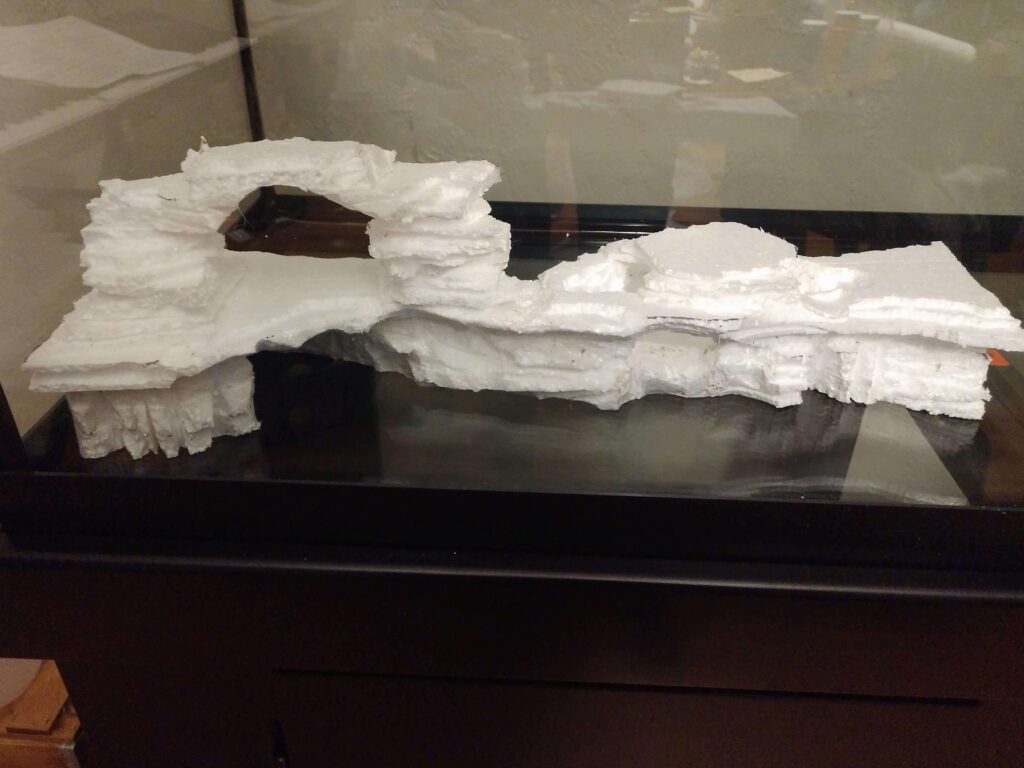
Summary
The allure of custom cement rocks in reef aquariums lies in their fusion of artistic expression, economic savvy, and ecological sensitivity. This approach offers a rewarding path for aquarists to craft personalised, cost-effective, and life-sustaining aquatic landscapes, turning the dream of a perfect underwater world into a tangible, thriving reality.
Understanding the basics of cement used for aquariums—from selecting the right type to recognising its role in aquatic stability—is foundational for any aquarist looking to enhance their reef tank with custom DIY structures. By prioritising the safety and well-being of the tank’s inhabitants, hobbyists can create beautiful, functional, and stable aquatic landscapes that mirror the diversity and complexity of the natural world.
The move towards DIY cement rocks in aquascaping is not just a trend; it reflects the aquarium community’s growing commitment to practices prioritising the health of the planet’s marine ecosystems. By embracing sustainability and reducing the demand for wild-caught live rock, aquarists play an active role in marine conservation, ensuring that their passion for the underwater world contributes positively to preserving natural beauty and diversity.
Source Links
DIY Rock Tutorial/Info Thread (Rocks, walls, floors, etc.) – Reef2Reef.com

